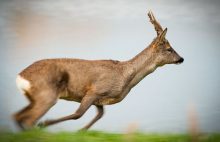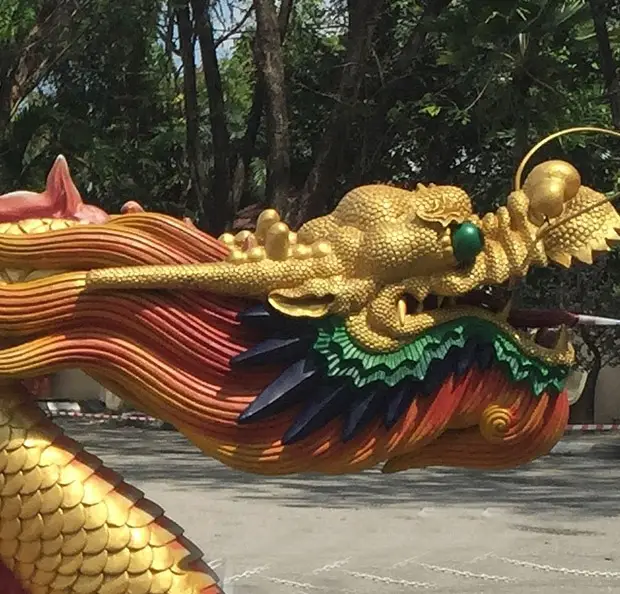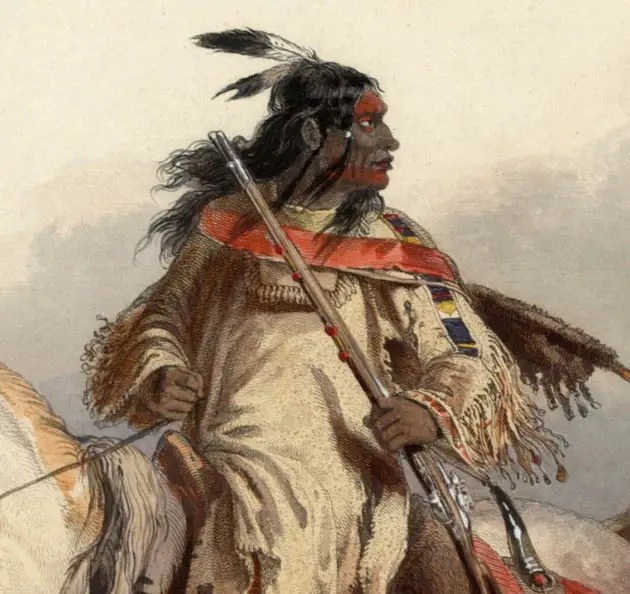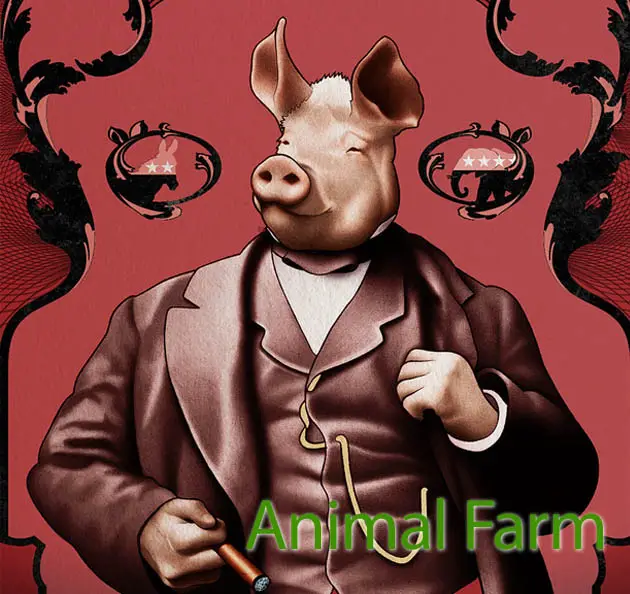DISCOVER YOUR ANIMAL PERSONALITY
The Original and Most Accurate Personality Test on the Web
Join million users who've taken our 10 question FREE quiz, and find out which one of the 50 animals you are!
Scroll for more
AS SEEN ON






Over 20 million people have taken The Animal In You Personality Test!
There’s a reason so many human cultures ponder the question, ” What animal am I?” You’ve probably wondered yourself. Native Americans asked, ” What is my spirit animal?” and went to find their guardian in the forest, while Asian cultures relied on the animal zodiac and Europeans turned to astrology.
How can you determine your inner animal? Fortunately it’s 2018, so you don’t have to venture into the woods to find your spirit animal or decipher ancient star charts. The Animal in You fuses ancient traditions with modern psychological and biological concepts and its nine question personality quiz has almost fifty possible animal results. It’s eerily accurate, and best of all… it’s free!
Are you a wolf personality, intimidating yet misunderstood? Or do you have the characteristics of a fox, a canine with a different survival strategy? You might have the attributes of a lion or tiger personality, or you may not be a carnivore at all. In fact, herbivorous personalities like deer, bison and sheep are far more numerous in the human zoo. If you’re extroverted and flirty you might be one of seven bird personalities, or perhaps an aquatic mammal like a dolphin or otter.
Ready to find your Animal Personality? Answer the questions honestly and the quiz will build a mathematical model of your personality and match it to our database of animal profiles.
This personality test is based on the bestselling books, The Animal in You and Animal Attraction by Roy Feinson. Roy is also the creator of The Secret Universe of Names, which theorizes that the sounds in our names subconsciously influence how others perceive us.
What others are saying
Why Do People's Personalities Resemble Animals?
Have you ever noticed that people tend to assume animal personalities? We talk of someone being a bear of a man or someone acting like a dog. People we don’t care for are weasels, sloths, or vultures. Why is there such a strong correlation between human and animal behavior? Are these connections coincidental, or is there a more simple explanation? A clue lies in nature’s need for diversity.
In a process known as parallel evolution, unrelated animal species, separated by vast distances, exhibit the same behavioral and physical characteristics. Isolated from the mainland for thousands of years, the extinct Tasmanian wolf, or thylacine, evolved numerous features similar to the North American wolf. Although it was a marsupial, its doglike body, coughing bark, and canine hunting behavior closely parallel that of wolf society, even though they have markedly different ancestries.
The fact is, an ecosystem without a robust number of species cannot successfully maintain itself. The food web requires the interaction of predators, prey, burrowing creatures, arboreal animals, and insects to remain stable, which is why every ecosystem has approximately 50 types of similar species that take advantage of the various food niches. A similar process has taken place in human society.
Our species dominates the planet and is an ecosystem unto itself. The variety of attributes that provide stability in the animal world — aggression, passivity, stealth, skittishness, etc. — serve the same functions in our own society. It is no coincidence, therefore, that we mimic these animal behaviors to better survive in a complex and competitive world.
The Four F's of Animal Personalities

F i g h t i n g
Fighting is equivalent to the way in which we try and control our environment. Carnivorous personalities are assertive and aggressive, while herbivore personalities tend to be passive and cautious.

F l e e i n g
Fleeing is how people protect themselves from each other. Herd animal personalities find refuge in the company of friends and family, wolves prefer tightly knit social groups, and mice personalities prefer to keep a low profile.

F e e d i n g
Feeding techniques translate into the careers that corresponding human personalities would choose. Bird personalities, for example, prefer jobs that provide a great deal of freedom, while sheep might flourish under the direction of a strong dog personality. Canine personalities like the wolf, dog and fox instinctively understand hierarchy, while bear personas chafe under the direction of authority.

S e x
Sex describes the ways we seek mates. From the brutal strength posture of the zebra to the seductive display of peacocks, all creatures strive to exert control over their reproductive choices. Some animal species -- like the beaver and many birds -- mate for life while others, like the tiger, are solitary and rarely monogamous. Every animal personality uses a distinctive set of subtle body language to stake its claim.
Animal Personalities in Culture

Chinese Zodiac
Recognition of the intimate connections between animals and humans dates back tens of thousands of years. The ancient Chinese developed a distinctive calendar system that described twelve animal personalities: Rat, Tiger, Rabbit, Ox, Dragon, Rooster, Snake, Horse, Ram, Pig, Dog, and Monkey. While the precise origins of these animals are unknown, Chinese astrologers considered them to be a reflection of the universe itself.

Native American Beliefs
Native Americans also recognized the intractable bond between humans and animals. For many young men, trekking into the forest to find their spirit animal was a rite of passage. Reverence for animals was almost universal among the Plains Indians, who dedicated a great deal of energy to paying tribute to their companions of the prairies. Spiritual beliefs were formed in large part by their close survival bonds with North American wildlife. Bison were not viewed simply as a food source but were recognized to be an essential element in the grand scheme.

Contemporary Literature
There is a great deal of writing found in contemporary sources that reflects our connections to animals with rich references in language. We refer to people as being bitchy, foxy, slothful, and catty. People work like horses, eat like pigs, and are as stubborn as mules. George Orwell's classic Animal Farm explored this idea to its limits, and animal characters dominate comic pages. The Pulitzer Prize winning Maus, by Art Spiegelman, detailed his father's concentration camp experiences and used animal personalities to depict the drama of the Nazi atrocities; mice were used to portray victims, cats to represent the Germans, frogs the French, and pigs to describe the Poles.
Relationships between Animal Personalities
For an ecosystem to remain stable, it must contain a wide diversity of species. It is also important that the ratio of these species is balanced, since an overabundance of predators could wreak havoc on the ecosystem. If predators were not present at all, then prey animals would overpopulate the environment causing overgrazing and disease. Interestingly, the ratio between predators and prey in nature seems to be mirrored in our own society. Larger animal personalities like elephants, giraffes, and gorillas cannot be supported in large numbers since their bulky personalities put a disproportional stress on the social environment. Conversely, smaller personalities like mice, otters, beavers, and sheep are found in great numbers throughout the concrete jungle.
The ratio of predators to prey in human society is maintained through a process of social pressure. Consider the artificial environment of prisons. In these overcrowded inhospitable conditions, someone who was previously a combative warthog might be unable to survive in a society dominated by crocodiles and lions. By backing away from his assertive stance and manifesting the more gregarious personality of a herbivore, this prisoner can seek the protection of the herd in order to survive. Carnivorous personalities are territorial and require more personal space than their herbivorous counterparts.

Courtship Rituals
From the subtle and coy techniques of the mouse and cottontail personalities, to the aggressive displays of the lion and wolf, every species employs a unique mating strategy. These sorts of behaviors come naturally to us and a visit to a public park quickly reveals our animal personalities in action. Young girls walk by, often arm in arm, pretending not to notice the watching boys displaying their own mating behavior. Some boys adopt masculine stances, lounging around with their legs apart, calling aggressively to the females. Others will feign disinterest and use subtle body language and eye contact to stake their claims.
A male wolf personality might pursue a female sable by first surrounding himself with friends for moral support and then carefully and indirectly approaching the female. If comfortable with these advances, the female will display her interest by moving slowly away from the pack—taking care not to withdraw too far. As the male continues his hunt, she will turn and cautiously engage the group.
This stalking approach is not for the male weasel. To seduce a female warthog personality he must first gain the trust of this cantankerous lady by hiding his true intentions with a small gift or an offer of friendship. If successfully swayed by these advances, the female warthog soon finds herself lured into an uncomfortably unbalanced relationship with the wily weasel.
The rules that govern our mating behaviors are instinctive and deeply rooted. In a number of mammalian species, when males reach middle age they respond to a biological realization that they are no longer in their prime. Aging silverback gorillas can no longer compete physically or sexually with the upcoming group of younger males, and in a biological panic, their reproductive urges trigger them to make one last fling at mating with younger, more fertile females. In humans, this manifests itself when a middle-aged man suddenly feels the urge to display his wealth by buying a fancy sports car, begins ignoring his wife, and starts a workout routine. This middle-life crisis is simply one example of our response to animal programming.

Animal Magnetism
Fortunately, we humans have the ability to control our own behaviors and are not complete slaves to these drives. Still, it is useful to understand our passions in the light of these powerful animal urges. When a wildcat and a fox get together, they have superficial connections with a common range and nocturnal spirit. However, as a canine, the fox is a natural competitor of the cat and its natural friendliness grates against the cat's tendency to maintain its distance. Over time these tensions conspire to destroy the relationship. Likewise, if a mouse personality married a cat, power conflicts or spousal abuse would quickly destroy the union.
So, all animal personalities should avoid forming close relationships with their species' natural predator.
However, this does not mean that all herbivorous personalities must avoid predators. The meek cottontail rabbit might even strike up a friendship with a powerful lion, since lions are disinclined to waste energy chasing elusive, low-calorie rabbits. Although marriage is out of the question, these friendships can be quite enduring. In exchange for companionship and loyalty, the predator provides resources and protection for the cottontail.
Animal personalities tend to relate to species that share their ranges. The water personality of the dolphin has much in common with the aquatic sea lion and the pastoral nature of the sheep makes for a compatible mate with the grazing deer. Conversely, animal personalities that live in markedly different environments tend to avoid each other. Birds choose to remain out of reach of the land mammal personalities and the unencumbered lives of the sea dwellers make them awkward mates for complex land creatures. On the other hand, the semi-aquatic beaver is capable of forming relationships with both water-going and land-based animal personalities.
Why Ask What Animal Am I?
Personality quizzes have been around since the 1920s and were originally designed to help businesses select personnel for the US military. In 1995, Roy Feinson published the bestselling book, The Animal in You (St. Martin’s), based on the hypothesis that humans adopt a set of behavioral and personality traits to allow them to function in their particular environments.
The book spawned a sequel, Animal Attraction, and popular books by other authors like, The Experiment of Professor Polgas (Brownlee) The fact is, humans are just like animals – albeit with much larger brains — and animals are just like people in that they exhibit virtually the same range of emotions. So asking “what animal am I” is a natural extension of asking yourself “who am I?”… the most basic question known to man.



